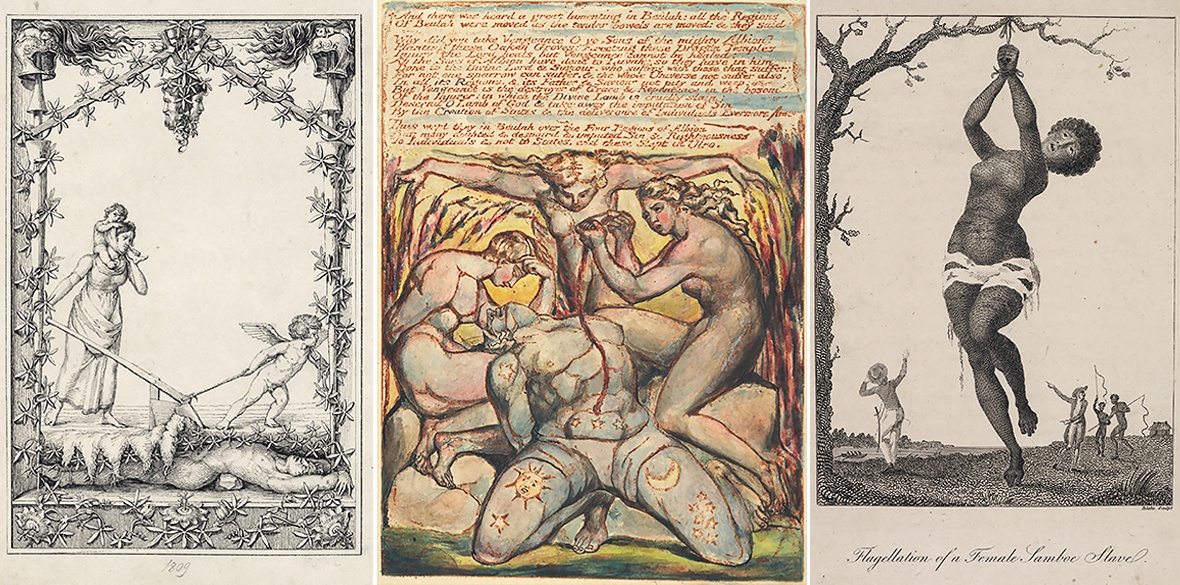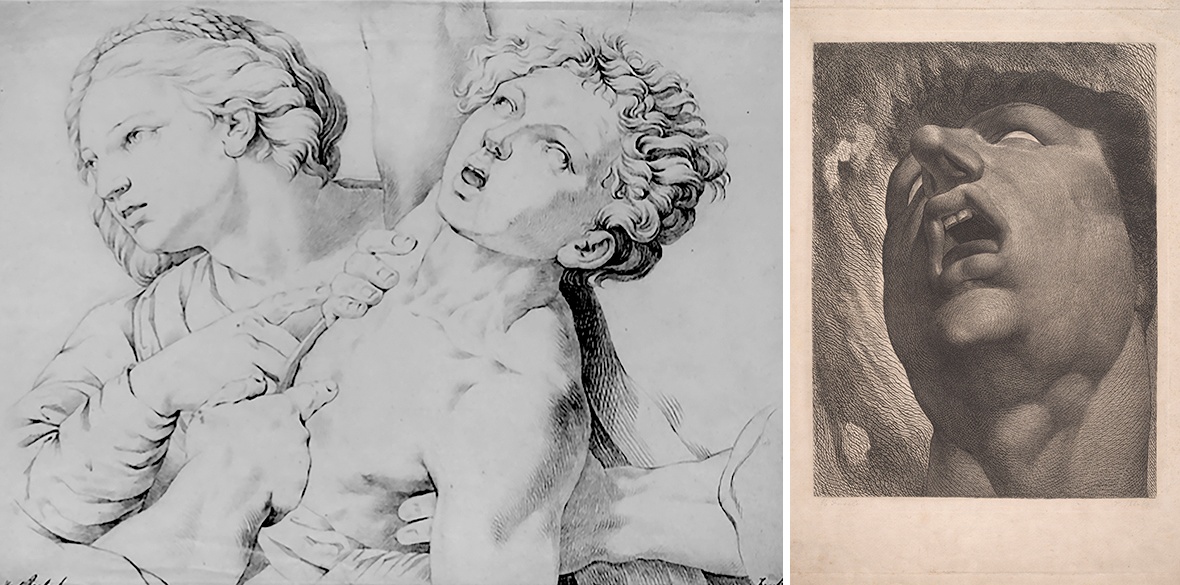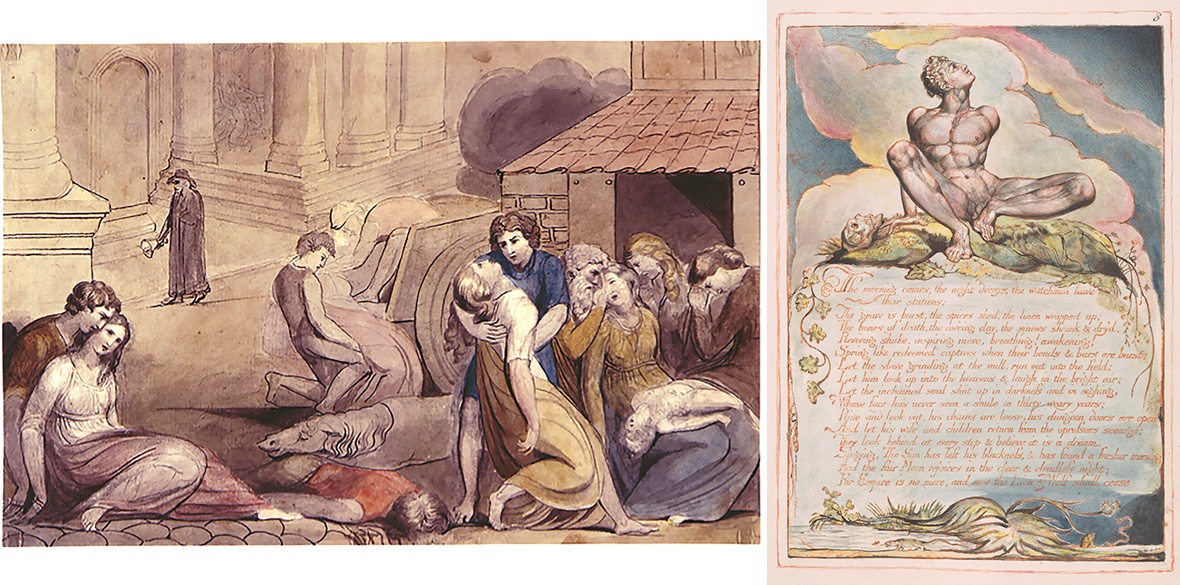This is the last article you can read this month
You can read more article this month
You can read more articles this month
Sorry your limit is up for this month
Reset on:
Please help support the Morning Star by subscribing here
William Blake’s Universe
David Birdman and Esther Chadwick
Philip Wilson, £35

WILLIAM BLAKE (1757-1827) is possibly best known as the creator of England’s unofficial national anthem. When I was a kid, my mother used to take me with her to the local Co-op Women’s Guild, and at the start of every meeting we would heartily sing “Jerusalem.”
England’s green and pleasant land was written in the context of a turbulent age of political upheaval where the American, French, and Haitian revolutions combined with the growth of modern capitalism. Unsurprisingly, both dissenting and visionary art flourished across Europe.
When you flick open the pages of this book, images and words created by European artists, including Blake, absolutely take your breath away. It’s obvious that William Blake was not simply the ultimate English eccentric that many of his contemporaries would want us to believe. Religious radicalism forms a central focus of his words and images.
In Jerusalem, which he created between 1804 and 1820, Blake produced over 100 relief-etched plates, many hand coloured. The figure Albion represents England on the journey through ancient religious human sacrifice, to Anglicanism and Christ’s sacrifice and in conclusion, sees Jerusalem as the final unity of all living things.
Blake produced many images of redemption. His print, Albion Rose, puts Albion as the central figure, a shining, naked body with a burst of bright light behind. With arms outstretched, Albion is ready to embrace a new dawn.
He considered human imagination to be transformative, an aspect of life that every one of us can access at any time.
This book contains many extraordinary contemporary portraits of Blake, a man sporting long curly hair, whose huge eyes penetrate you from the printed page. In one, his hand gently rests on a human skull. There’s no doubt that Blake was a complex character suffering from mental hallucinations, but his creative output, as evidenced in this book, was astonishing.
Blake’s idea of liberation embodied the abolition of all laws that constrained imagination and sexual freedom. Along with other European artists illustrated here, his images of oppression and poverty are often interpreted in terms of biblical apocalypse.
Many of these illustrations still convey powerful meanings for us today. For example, an old, bearded man with his wife or daughter crouching and clutching his lower body, fends off a terrifying sight beyond the image, a reference to the horrors of war.
Also, pestilence is strongly symbolised in many of Blake’s etchings and poems. In his picture Famine, two emotionally gutted women, a dead child lying in the foreground, huddle before a fire in an attempt to get warm. Famine and pestilence summed up life for so many British citizens in the previous two centuries. To quote from Blake’s poem, The Human Abstract (Songs of Experience): “Pity would be no more/ if we did not make somebody poor/ And many no more could be/ if all were as happy as we”.
Blake’s intention was to bring about change in both the social order and in the minds of men, which many people found disquieting. He was labelled an eccentric.
This absorbing book in which Blake is seen alongside other artists and influential friends in a European and global context has been published as part of an exhibition at the Fitzwilliam Museum, Cambridge, that runs until May 19 and some 180 paintings are on display from artists who never actually met, but whose intentions were remarkably similar.
Blake’s Universe revealed to me a constellation of European artists seeking spirituality in their lives in response to war, revolution and political turbulence. Blake was not alone in using art and poetry as a tool to reconstruct the world anew in the face of shattering political crisis, elements of which remain with us today.
In this large-sized book, beautifully reproduced, the combination of words and images are unforgettable.












